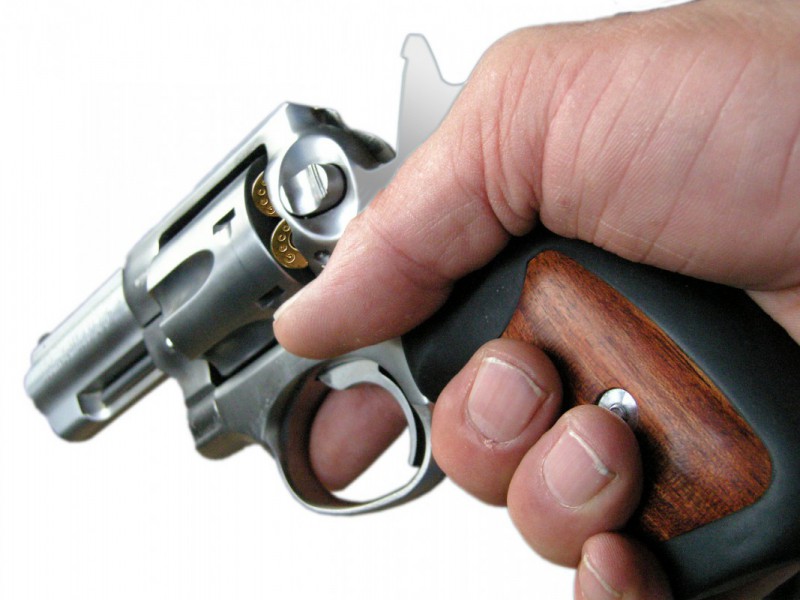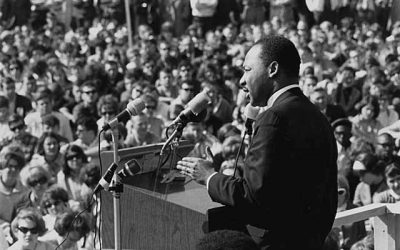In response to the tragic shootings at Columbine High School and the Los Angeles JCC, the relation of gun availability to violent crime has been furiously debated in the media.
One highly visible scholar in the media debate is economist and social scientist, John Lott, Jr., the John M. Olin Visiting Law and Economics Fellow at the University of Chicago. The title of his 1998 book, MORE GUNS, LESS CRIME, may at first strike the reader as provocatively counterintuitive. Lott argues that states’ issuance of permits allowing private citizens to carry concealed handguns has NOT caused crime to rise, but has in fact dramatically REDUCED violent crimes. That’s one fact you won’t here on Rosie O’Donell.
How is this possible?
Nondiscretionary concealed-carry permits deter crimes against persons because criminals — fearing for their own lives — don’t know which potential victims in a right-to-carry state are armed and which are not. National polls suggest that there are as many as 3.6 million defensive uses of handguns by private citizens each year. There are no hard numbers available, because these incidents are rarely reported to the authorities and because 98% of them consist merely of brandishing the gun rather than discharging it. Lott’s landmark study now confirms the bountiful anecdotal evidence for deterrence.
In the last two and a half years since Lott first published his findings in the JOURNAL OF LEGAL STUDIES, he has vanquished all attempts by political and academic opponents to undermine his thesis.
Lott’s statistical analysis of crime in the U. S. remains unsurpassed in its depth and thoroughness. While other crime studies look at a small area over a long period of time or a broad area over a short period, Lott’s study examines the data on crime rates from the FBI’s UNIFORM CRIME REPORTS for all 3, 054 counties in the United States, from 1977 to 1992. He supplemented this evidence with other FBI data for 1993 and 1994.
Lott cross examined this data on crime rates with U. S. Census data on population density per square mile, total county population, breakdowns of county population according to race, sex, age, real per-capita income, etc. He also took care to distinguish changes in the crime rates produced by concealed-carry laws from changes associated with long-term trends and with changes in the rates of other deterrents such as arrest, conviction, length of sentences, etc. While other crime studies look only at aggregate, state-level data, Lott went county by county, noting differences between rural, sparsely populated counties and urban, densely populated counties, poor and rich counties, etc.
Lott’s conclusions shattered the conventional wisdom about the correlation of crime to gun ownership by responsible citizens.
“National crime rates have been falling at the same time as gun ownership has been rising. Likewise, states experiencing the greatest reductions in crime are also the ones with the fastest growing percentages of gun ownership.”
“Allowing citizens to carry concealed handguns reduces violent crimes, and the reductions coincide very closely with the number of concealed-handgun permits issued. Mass shootings in public places are reduced when law-abiding citizens are allowed to carry concealed handguns.” (20)
Nondiscriminatory concealed-handgun laws require law enforcement officials to issue, without subjective discretion, concealed-weapons permits to all qualified applicants. State requirements generally include lack of a criminal record, lack of mental illness, an minimum age restriction of 18 or 21, various fees, and training in proper usage. Discretionary state laws empower law enforcers or judges to make case-by-case decisions as to whether an applicant has a “compelling need” for a permit.
As of 1996, 31 states have non discretionary rules or no permit requirements at all. Twelve states have discretionary rules while seven, plus the District of Columbia, forbid the carrying of concealed handguns altogether.
“When state concealed-handgun laws went into effect in a county,” Lott found, “murders fell by about 8 percent, rapes fell by 5 percent, and aggravated assaults fell by 7 percent.” Prohibition states have murder rates 127% higher than those states with the most liberal carry laws.
States with discretionary rules or outright prohibition of concealed weapons have dramatically higher rates in violent crimes that states with non discretionary rules or no requirements. In such states, murder is 86% higher, rape 25% higher, aggravated assault 82% higher, and robbery 105% higher.
Lott found that populous, urbanized counties, women, and racial minorities benefited most from non discretionary carry laws.
The deterrence of violent crime by these laws was offset, though, by lower decreases in property crimes, as criminals shifted from violent crime to auto theft or burglaries to avoid contact with potentially armed victims. Deterrence in violent crime is further indicated by the movement of criminals out of right-to-carry states. The adoption of a nondiscriminatory carry law in one state corresponds with a large increase in violent crimes in the counties of neighboring states without the right to carry (although those increases prove to be short-lived).
When many states began debating the merits of a concealed-carry law in the late 1980s and 1990s, gun-control advocates warned that the proliferation of concealed weapons would result in an explosion of gun fatalities, if only as a result of arguments over car accidents, drunken quarrels, mistaken identity, and the like. Although there are now 31 right-to-carry states (and some of the concealed-carry laws are decades old), there exists only one recorded instance of a permitted, concealed handgun being used in a shooting after a traffic accident (and that shooting was in self-defense).
No permit holder in the U. S. has ever shot a police officer, and there have been occasions in which permit holders used their guns to save officers’ lives. About 30 persons are killed annually by private citizens mistaking them for intruders, by contrast with 330 accidental killings by police officers each year.
As part of his study, Lott made a telephone survey of the top law enforcement officials in all 50 states. He learned some telling facts.
From 1 October 1987, when Florida’s concealed-carry law went into effect, until the end of 1996, over 380,000 permits were issued to qualifying applicants. Only 72 permits were revoked because of crimes committed by the permit holders (and most of these crimes didn’t involve the permitted weapon). Between September 1987 and August 1992, only 4 crimes involving permitted handguns occurred in Dade County (Greater Miami), and none of those resulted in injury.
Multnomah County, Oregon, issued 11, 140 permits from January 1990 to October 1994. In that time, only 5 permit holders were involved in shootings. Three of these were found to be justified by grand juries. Neither of the remaining two produced a fatality (one was domestic dispute, the other a loading accident).
In Virginia, no permit holder has been involved in a crime. In the first year following the enactment of a concealed-carry law in Texas, 114, 000 permits were issued and only 17 were revoked (for reasons not specified). After Nevada’s first year, law enforcers could not document a single instance of a fatality resulting from misuse of a gun by a permit holder. The same is true of Kentucky.
North Carolina has not revoked a single permit as a result of the misuse of a permitted weapon. Since 1989, only one person holding a gun permit in South Carolina has been indicted for a felony. (The felony had nothing to do with the gun and the indictment was later dropped.) These stories go on and on. . .
Private citizens carrying handguns in public places may evoke terrifying images of shoot-outs over gambling disputes in the dusty streets of Dodge City (a legendary image demonstrated to be historically inaccurate by the scholarship of Old West historian, Roger McGrath).
But a man with a concealed-carry license who walks along a crowded sidewalk, carrying a pistol in a shoulder holster under his coat, no more poses an objective threat to the lives of pedestrians than a man with a driver’s license who drives his car down that same street. Indeed, a one-ton Oldsmobile could kill a lot more people if the driver accidentally swerved onto that crowded sidewalk than a 9mm Beretta could kill even if fired into the crowd deliberately by a cool-headed marksman.
It is no more rational or moral to prohibit the bearing of concealed handguns by law-abiding citizens in public so as to reduce murders, than it would be to prohibit the driving of automobiles down public streets to reduce hit and runs. If “gun control” advocates were really concerned with saving lives, and reducing violent crime, they would demand states introduce concealed gun permits rather then viciously opposing them.
Buy these books by clicking these links and Capitalism Magazine receives a commission from Amazon.com:
- More Guns, Less Crime : Understanding Crime and Gun-Control Laws (Studies in Law and Economics (Chicago, Ill.).) — John R., Jr. Lott; Paperback
- More Guns, Less Crime : Understanding Crime and Gun-Control Laws (Studies in Law and Economics) — John R., Jr. Lott; Hardcover




